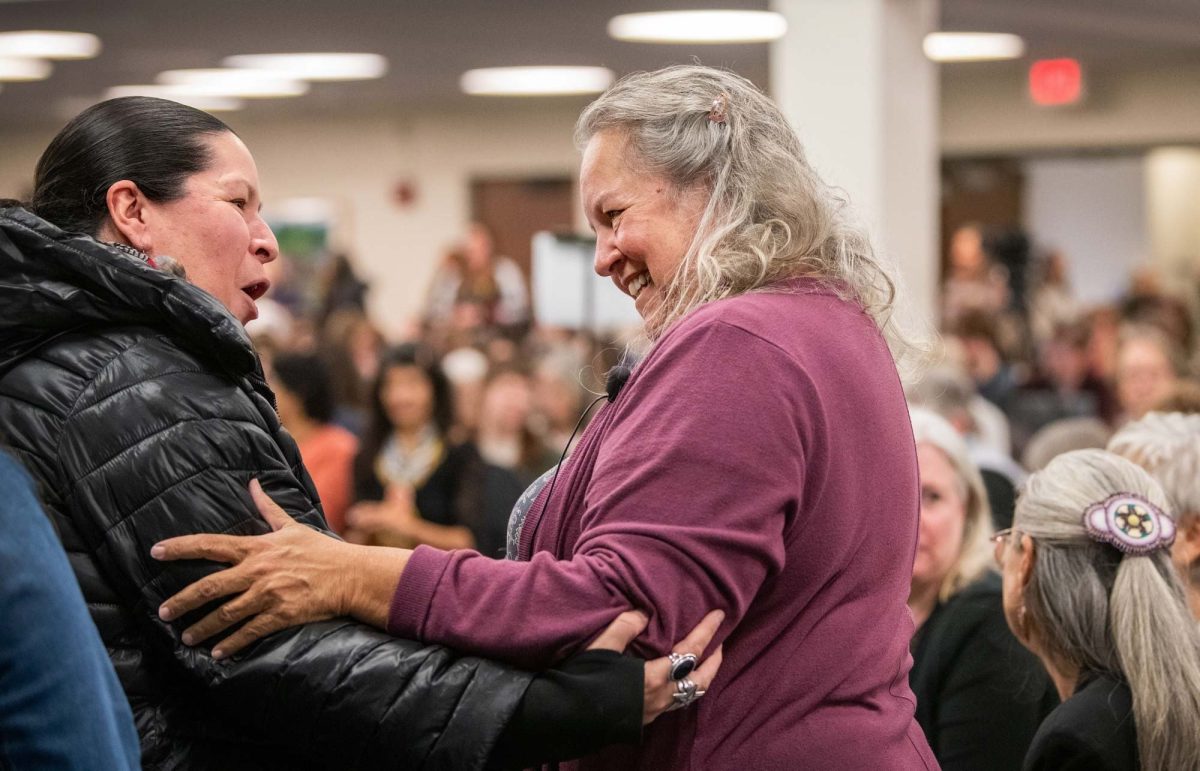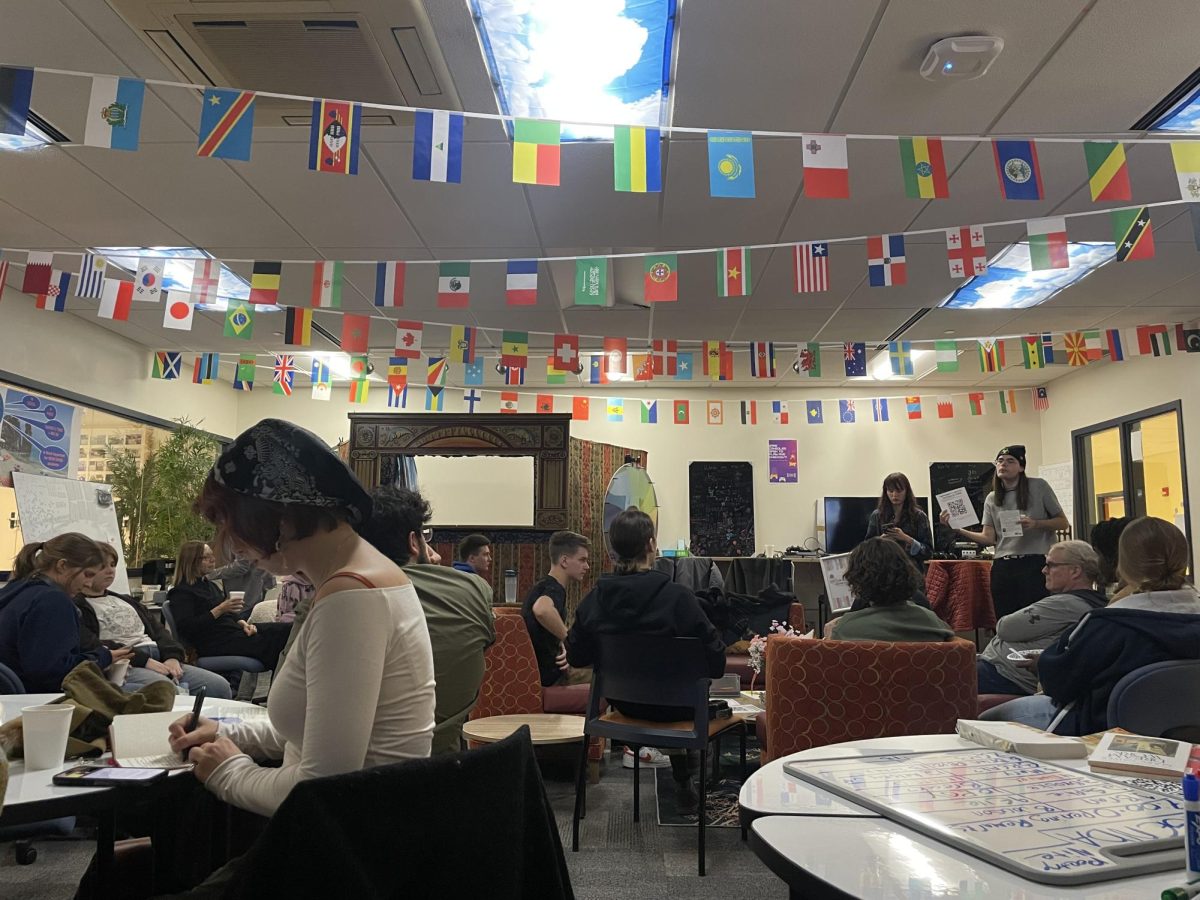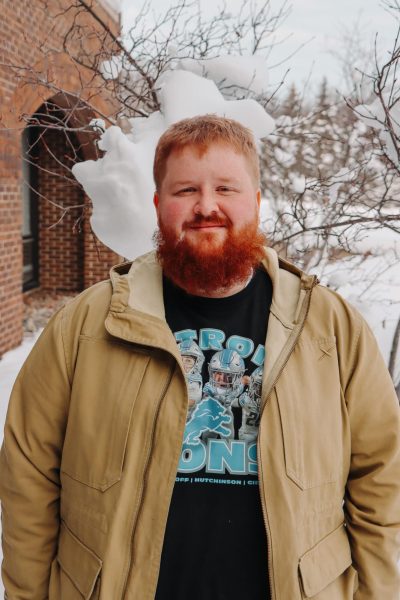Best-selling author Robin Wall Kimmerer gave a presentation on biodiversity and sustainability to Grand Valley State University students on Nov. 8 to kick off the 2023 GVSU Teach-In, an event intended to spark discussions and “improve inclusion and equity.”
Her presentation encouraged the audience to consider “what does the earth ask of us?” a question Kimmerer said we need to consider, as we find ourselves on the brink of climate catastrophe.
Kimmerer cited a 2019 report from the Intergovernmental Science-Policy Platform on Biodiversity and Ecosystem Services (IPBES) that reveals nature on Indigenous land is declining less rapidly than on other lands.
Kimmerer, a member of the Citizen Potawatomi Nation, discussed indigenous teachings, scientific knowledge and the knowledge of plants, which she says are key for answering her question. The relationship between these teachings is at the heart of her book “Braiding Sweetgrass: Indigenous Wisdom, Scientific Knowledge, and the Teachings of Plants.”
Kimmerer said the collaboration of these ideologies allows people to better care for the earth and to “see with both eyes.”
Julia Mason, Ph.D., Associate Professor in GVSU’s Women, Gender and Sexuality Studies Department, helped bring Kimmerer to campus in collaboration with the Brooks College of Interdisciplinary Studies. Mason said the event aimed to examine GVSU’s responsibility as a public institution in being stewards of the community and carrying on indigenous messages.
“Robin’s work in particular really speaks at this intersection of thinking about indigenous knowledge and the importance of community,” Mason said. “It’s a really exciting time to bring marginalized voices (here) and amplify and really listen to them.”
Kimmerer’s presentation also touched on her experience of being the only indigenous woman studying botany at university. Kimmerer said when she was a student, she was discouraged from incorporating indigenous teachings and the knowledge of plants with the scientific ideology.
At GVSU, the Native American Advisory Council (NAAC) is working to create an environment that supports the needs of indigenous students in and out of the classroom.
Carsyn Brunette, a junior at GVSU independent from NAAC but works to assist native students, said it was difficult to find her place within her major and among her peers. Brunette said she would often feel “too Native” around her non-Native friends and “not Native enough” around her Native friends and family.
“I just transferred last semester, and it was actually really difficult not having (a) Native community,” Brunette said. “I want to help other students feel more accepted and know that this is a welcoming space for Native students because, without a sense of community, you feel like you don’t belong anywhere.”
A large part of the NAAC’s work has been focused on cultural and environmental sustainability. Belinda Bardwell, NAAC member and Assistant Director in the Office of Multicultural Affairs said sustainability for the student body and campus is a process GVSU is working on.
“We can’t touch on other aspects of sustainability if our human beings aren’t sustained,” Bardwell said. “(We need to) realize the apparent shortcomings of our funding (to be sustainable).”
Bardwell said the NAAC recently visited Arizona State University to learn more about methods that other universities with a large Indigenous student population are using to create sustainability. Bardwell said two of the biggest takeaways from the trip were the curriculum and language used at ASU, something that Kimmerer also touched on.
“What she (Kimmerer) gave us yesterday was a roadmap to a better society,” Bardwell said. “Grand Valley, with an increase of indigenous faculty and staff, can start really embracing that ‘two-eyed’ seeing that Robin talks about.”
Kimmerer’s presentation is available on the GVSU YouTube channel. Students interested in learning more about the NAAC can complete an online form to receive information about the council.











